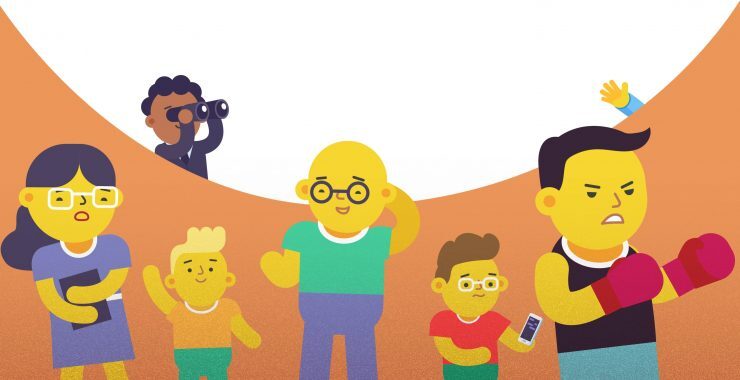
10 Examples of Communicating Without Words
The act of sharing facts, ideas, and views with another person or people is called interpersonal communication. It helps teams work together better, get to know each other better, and solve any issues that come up.
It’s important to be able to communicate clearly and read nonverbal signs during meetings and heated arguments. Even though we try to hide how we feel and what we think, our bodies still send us signs.
To build relationships at work and in your personal life, you need to be able to communicate clearly. Talking and not talking are the two main types of communication. This blog will mostly be about the nonverbal part of conversation.
Even though most of us are aware of it and use it all the time, nonverbal communication is often done unintentionally but can tell a lot about people and situations.
By learning about the different kinds of body language, you can improve your ability to read people. No matter how strange it seems, we all do things that serve the same purpose when we’re stressed and when we’re not. Everyone feels emotions.
What does nonverbal conversation mean?
People use their body language, gestures, tone of voice, facial emotions, posture, and other nonverbal cues to send messages. Why, then, are these wifi clues so important to find?
Body language is an important part of talking to other people because it lets them know how you’re feeling.
People can feel at ease, be drawn to you, and believe you based on how you sound and act, or they can be scared or have a bad opinion of you.
Body language is a very important part of conversation, and it’s not just important when you’re talking to your family, spouse, or kids.
It’s also important for your job. It’s very helpful for businesspeople and managers to understand how people communicate without words. This helps you:
– better share your thoughts, feelings, and ideas
– connect with other people better
– make your relationships stronger
– Make things clearer and build trust
Everything above is very helpful when you’re in charge of a group of people and have to work with a lot of different people.
Rona Beck writes about communication topics for an assignment service once a week. She says that most people don’t know about all the different parts of nonverbal communication.
What does nonverbal conversation mean?
Have you ever thought about how body language can really help? Let’s look at some examples of nonverbal conversation that happen in real life.
People always compliment the Marketing Manager at Chanty on how well she can present. The people we worked with and the bosses asked us why they liked her talks so much. The answer we got was that it was because of how well she communicated without words. She often looked people in the eyes, which showed that she was clear-headed and trustworthy.
In real life, the best teachers, artists, lawyers, TV hosts, reporters, and salespeople often show great examples of nonverbal communication.
When you talk to someone, the things you see are more important than what you hear. This sums up how important unconscious communication is.
ResearchGate says that 80% of conversation is done without words. We share our deepest emotions, like hope, joy, anger, sadness, and worry, without using words.
People all over the world are even going to classes to improve their nonverbal cues because they are becoming more important.
10 Examples of communicating without words
Nonverbal speech can be seen in many situations. Today, we’re going to talk about ten main types that we think are important. Let’s look at them down below.
Expressions on the face
A very important fact that lots of people don’t know is that everyone can read facial emotions. Since you’ve seen the show Lie to Me, you already know that there are seven main feelings.
Being sad, angry, disgusted, scared, shocked, looked down upon, or happy are some of these. Though our cultures can affect how we think and act, facial emotions are something that everyone can understand.
Over fifty studies have shown that these facial emotions happen without thinking about it and can’t be stopped. Micro-expressions, which are different from macro-expressions or facial expressions, were found through more study. When we’re scared, happy, or sad. When we are with the people we care about most, there is no reason to hide or take them back.
But sometimes, when different things happen, we might want to do this. When you have to speak in public, for example, fear, shame, nervousness, and other bad feelings can creep into your body. Because of what people might think of you, you will want to hide them.
We think we can hide our thoughts, but they always show up in the form of small things we do. They are hard to spot, and you need to learn and work out because they only last a short time.
Hand gestures
Gestures come in many forms. We all know that some of them are meant to be intentional, like waving or pointing, and some are not.
You can change your gestures by touching certain parts of your body, ringing rings, clicking pens, and so on. These things are often shown when someone is upset. You can see that some speakers use this gesture during a talk.
Artists can also use motions, which may be one of the most natural ones. They are used unconsciously to support what is being said.
Moving and standing up
Body language is mostly made up of posture and movement. When they are feeling stressed, most people will do things that make them feel better.
How someone moves and stands can tell you a lot about how they’re feeling. One way to show that you are not open to new ideas or answers is to stand with your arms crossed.
Or, crossing your legs is a pose that shows defiance and defence. Movement and posture send messages about how someone is feeling.
Phonology of speech
Nonverbal communication is a big field that covers everything our bodies do. Your tone of voice, pitch, volume, and intonation all show paralinguistics.
Just think about how the way you say different words can change what they mean in a line. Small things, like not hearing a word right, can lead to misunderstandings.
For instance, the words affect and effect sound a lot alike but mean different things. We can usually tell the difference between them thanks to context and body language.
You can tell how someone is feeling just by paying close attention to what they say and how they say it. A cold tone of voice is linked to bad feelings, while a warm tone of voice is linked to better feelings.
Taking a look
The eyes show what’s inside a person. They never lie either. Everyone knows this. Eye contact is something that everyone does in a talk because it helps you learn more. It also helps you connect with your surroundings and read the body language of the person you’re talking to.
But making eye contact with someone helps us connect with them. During my time as a psychology student, I learned that I shouldn’t look at someone and then talk to them. When someone gazes, they are thinking deeply. When someone looks at you, it means they want to talk and listen.
You can also send different messages with your eyes. Depending on where you live and your culture, making long eye contact can be seen as threatening. Or, in a different situation, flirting.
For whatever reason, eyes can help people connect with each other. This is very important for businesspeople and managers.
How they look
People also think that the colours we wear, the clothes we dress up in, our styles, and other physical traits can help us communicate without words.
Colour psychology studies show that different colours can make us feel different feelings. The way someone looks can affect how their body reacts, how they are judged, and what they decide.
Do you ever think about how quickly and unconsciously you judge people based on how they look? Because first impressions are important, job seekers should also dress properly for interviews with possible employers.
Culture has a big effect on how people judge how someone looks. In the West, people often look up to people who are thin. In some African countries, on the other hand, people who are bigger are seen as more important, wealthy, and healthy.
Things that were made
Objects and images are two other types of silent communication. In an online community, for example, you might pick an avatar to show who you are and what you like.
A lot of the time, people put a lot of work into building an image for themselves and surrounding themselves with things that represent important things to them.
Because of this, clothes can be used to send a lot of private data. An officer of the law will wear a uniform, a doctor will wear a white lab coat, and a student may wear a uniform to show support for their school.
People can tell right away what someone does for a living or where they fit with these costumes.
Space for yourself
Are you comfortable with people talking to you? Have you ever felt weird because someone was intimating your space? We all need physical space, but our needs change based on culture, situation, and how close the connection is.
Space can be used to send many different kinds of nonverbal messages, like closeness and sympathy, control, or hostility. People in the United States usually talk from about an arm’s length away to four feet away.
In the United States, having less space can either make people closer or make them act more unfriendly. Some people may feel threatened when someone invades their personal space, which can make them act negatively.
Showing things visually
When you use visual aids in business conversation, you’re using visual communication. A red sign, for example, means “danger,” a skull between two crosswise-arranged bones means “danger,” and a picture of a lit cigarette with a cross on it means “do not smoke.”
Getting around
The mental and physical factors of the place where synchronous communication takes place are also part of the environment. More than the desks and chairs in an office, the setting is an important part of the dynamic conversation process. How someone sees their surroundings changes how they act in those situations.
For example, Google is known for its great work setting, which includes places to work out and even food service that’s available 24 hours a day. The price is definitely high, but Google’s deeds speak for themselves. It was worth it for the situation to encourage contact, collaboration, and new ideas to lead to good results.
A few more words about communicating without words
Body language is another name for talk that doesn’t involve words. People can learn a lot about each other from the things that are around them all the time.
People can get strong messages from the way you sit, talk, move, and make gestures. Micro and macro phrases are used all over the world.
Everyone needs to pay attention to their body language. It helps you change how you act around some people. It helps you connect with people better. It makes it easy to help and support other people.
Meaning and information are sent to others through behavioural cues, and they also help us understand what other people are doing.
When looking at these kinds of unconscious behaviours, it’s important to think about what people are doing in groups. Along with what someone says, you can learn a lot about what they really want by watching their body language, facial reactions, and tone of voice.
What do you think about this subject? What do you think about body language? Post a review, and let’s talk about it.











